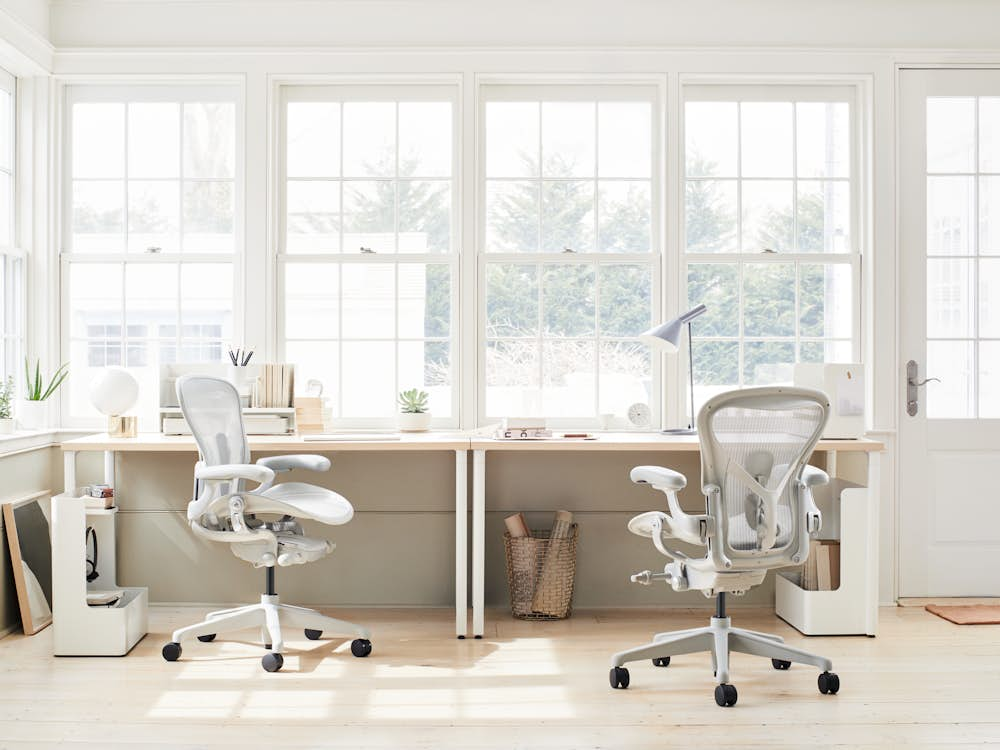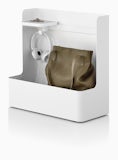With rapid innovation and an ever-evolving global economy, organizations of all sizes are constantly re-evaluating their space needs, and rightly so. Many organizations have shifted to a hybrid work model that allows employees to have greater autonomy in where and when they work. The shift to hybrid work, however, naturally requires that companies rethink the way they engage with and use space.
Office efficiency has always been a priority for business leaders. A truly efficient workplace can not only represent cost savings, but it can also increase productivity and engagement, thus positively impacting overall business performance. When it comes to efficient office space, it’s not so much about square footage and density, but more so about creating a fluid workplace experience for employees. With the shift towards hybrid work, businesses are determined to craft unique, in-person workspaces that promote employee satisfaction.
Office Efficiency in a Hybrid Work Environment
With hybrid work models expected to become the norm, company leaders are quickly evaluating their real estate strategies and trying to iterate based on future space needs. We are at a point in time when organizations are reimagining the way people may interact with space and, in some instances, the best course of action will be a more flexible reconfiguration of the workplace layout.
Reconfiguring the workplace will serve two main purposes:
- Ensure that the office environment supports worker preferences and needs.
- Create efficiencies--operational and financial.
However, to reconfigure the workplace and ensure that it is flexible enough to be adjusted in the future, should it be warranted, experts recommend looking for efficient office solutions (also known as agile workplaces in some circles).
Efficient office furniture has a number of attributes:
- It’s space-saving
- It’s easy to configure
- It’s both easy to move and adjustable for different settings
- It serves multiple purposes
The right workplace experience can drive efficiency by increasing productivity, saving time, and providing the right tools and platforms for people to get work done in an efficient manner. For example, a seamless experience in a hybrid work setting requires that offices are equipped for audio and video conferencing. The right experience will make it easy for workers to walk into a meeting room and connect with the A/V technology. Ease of connectivity in the office is imperative to consider when choosing agile furniture.
Improving office efficiency can be as simple as:
- Taking advantage of vertical space.
- Having power access in the right places.
- Having compact, space-saving furniture, featuring a modern desk that provides ample workspace, privacy for focus, storage, and ergonomic seating
- Creating spaces that can serve a variety of functions, like a cafe area that can serve as a casual meeting point, or a lounge area that can double as a reception.
Obtainable Efficient Office Solutions for SMBs
- Modular Furniture for Flexible Small Businesses
Modular furniture like the Wilkes modular sofa create efficiencies due to their versatile nature. Modular furniture options exist beyond seating arrangements and may also include elements for storage, decoration, and work areas.
Modular furniture is typically lightweight and can easily be assembled and disassembled, which embeds a certain degree of flexibility to the space, therefore improving office efficiency. This flexibility allows offices to customize a design that is compatible with their office layout, no matter the constraints. - Space-Saving Office Furniture
Efficiency requires preventing the wasteful use of particular resources. In the case of a workplace environment, this means maximizing the amount of square footage that is actually usable.
Space-saving furniture is a key component of productive office space design and can create efficiencies by freeing up space that make the workplace more comfortable and easier to navigate, which can increase productivity and engagement.
Some space-saving furniture options include desks with optional drawers, storage solutions that can easily be pulled in or out, decorative elements that can double as seating arrangements, and furniture that is easily expandable and re-sizeable. - Furniture that Supports Tech
Technology is a key component of work, and in a hybrid setting, seamlessly integrating tech components is necessary to create a workplace that supports new work models and employee preferences. From power access and A/V integration to wireless connection and enough screens, these small details can save valuable time, increase productivity, and ensure meetings are more effective.
- The Right Layout and Floor Plan Distribution
Efficient office space requires the right layout configuration and the right floor plan distribution. This requires that leaders have a clear and deep understanding of how employees use and interact with the workplace. For some companies, the right layout will include a significant percentage of space dedicated to individual phone booths and office pods; for others, it might require more meeting space for smaller teams; and still for a remaining few, it might mean more lounge and social areas that can be easily reconfigured to host groups of different sizes.
Reimagining the Small Business Workplace of the Future
These solutions are critical as they allow for environments to be set up in a way that is convenient and beneficial to the end-user. The workplace of the future is all about the experience; it’s about delivering something people cannot get at home. This requires that companies eliminate many of the inconveniences (lack of phone booths, lack of spaces that foster collaboration, lack of meeting rooms, too much open space, high noise levels, etc.) that we previously experienced in traditional office settings.
Fully distributed work has shown that people still need in-person, human moments to build connection and well-being. This requires an environment that is intentionally conducive to productivity and coworker engagement. When designing an efficient workspace, it is necessary to be mindful of the most basic human needs and sense of belonging.


